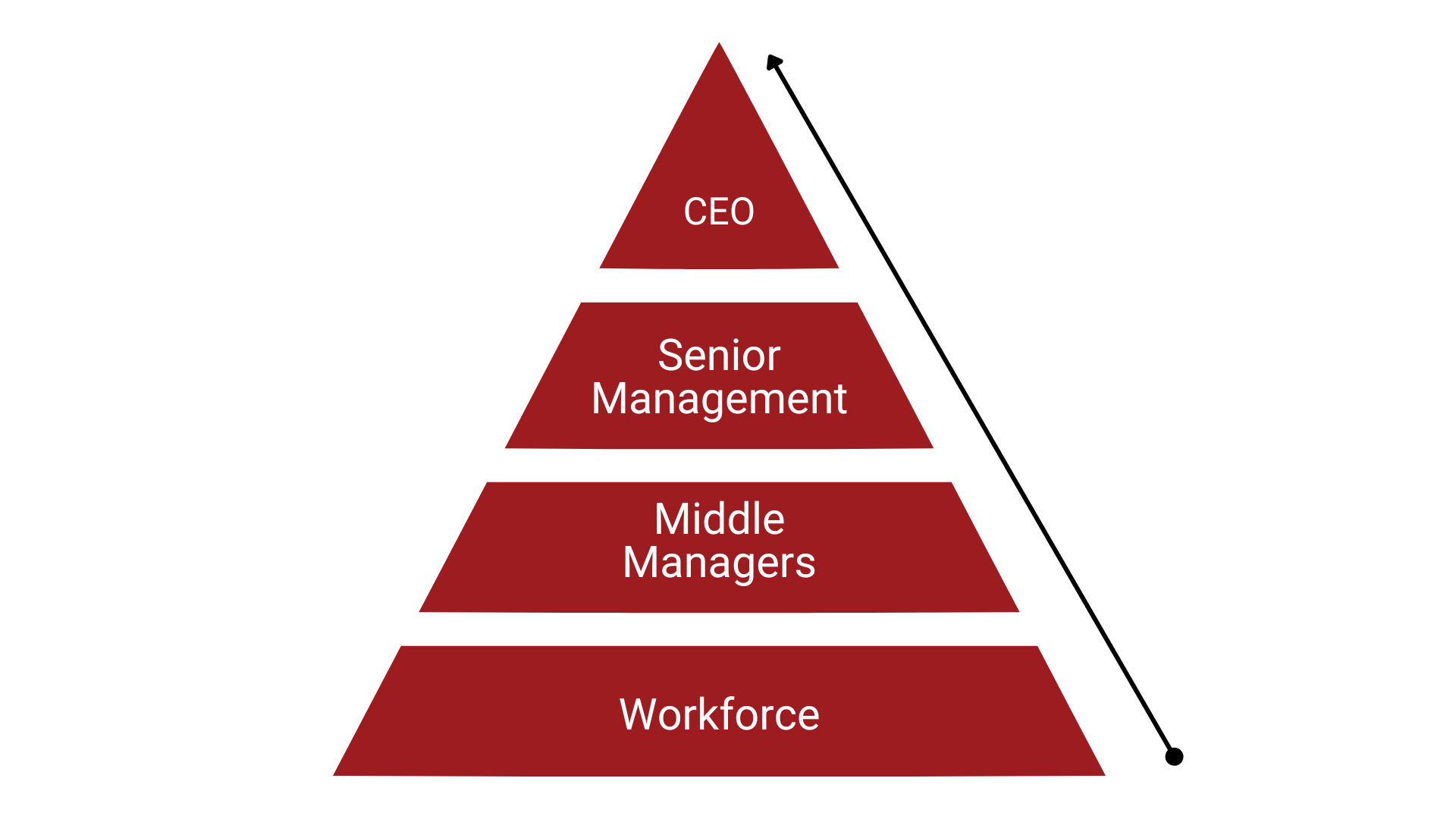Hierarchy
Hierarchy in business usually refers to a hierarchical organisational structure. You might have heard someone in the past refer to it as "the hierarchy”. This simply means that the person is taking into consideration the hierarchical nature of the organisation.
A hierarchical organisation structure delineates both authority and responsibility and designates leadership over a corporation's employees, departments, divisions, and other executives depending on their place within the strata.
Understanding a Hierarchical Organisational Structure
Businesses of all shapes and sizes heavily use organisational structures. They define a specific hierarchy within an organisation. A successful organisational structure defines each employee's job and how it fits within the overall system. The organisational structure lays out who does what so the company can meet its objectives. A well-functioning organisation with a hierarchical structure ensures that communication flows effectively and everyone understands their role in the functioning of the business.
Types of Hierarchical Organisational Structure
When you hear hierarchy, you might think of a structure like a pyramid with many workers at the bottom and a single leader at the top. This is a good representation, but it can also be deeply misleading as this isn’t the only type of organisational structure.
There are various types of organisational structures. Other structures that you might see include the following:
- Functional Structure
- Division or Multidivisional Structure
- Team-Based Structure
- Flat Structure
- Matrix Structure
- Circular Structure
- Network Structure
Each structure has its advantages and disadvantages. The most appropriate arrangement will depend on the size and type of your business, and the number of management levels that you need.
How Does a Hierarchical Organisational Structure Work?
A hierarchical structure is typical for larger businesses and organisations. It relies on having different levels of authority with a chain of command connecting multiple management levels within the organisation.
The decision-making process is typically formal and flows from the top down. This creates a tall organisational structure where each level of management has clear lines of responsibility and control. As the organisation grows, the number of levels increases and the structure grows taller.
Often, the number of managers at each level gives the organisation the resemblance of a pyramid. This structure gets wider as you move down, usually with one chief executive at the top, followed by senior management, middle managers, and finally the workforce. Employees' roles are clearly defined within the organisation, as is the nature of their relationship with other employees.

What are the Advantages of a Hierarchical Organisational Structure?
A hierarchical structure can provide benefits to businesses. For example, it can help establish:
- clear lines of authority and reporting within the business
- a clearer understanding of employee roles and responsibilities
- accountability for actions or decisions at different management levels
- clear career paths and development prospects, which can motivate employees
- opportunities for employees to specialise and develop expertise in their field
- close supervision of employees through a narrow span of managerial control
- a culture of loyalty towards teams, departments and organisation as a whole.
By following the correct processes that run within the organisation’s structure, the business should be able to achieve these benefits.
What are the Disadvantages of a Hierarchical Organisational Structure?
Workplace hierarchies are not always effective. Common disadvantages of a hierarchical structure include:
- complicated chains of command, which can slow down decision-making
- inconsistencies in management at different levels, which can impede work
- delays in communicating vertically through the levels and horizontally between teams
- less flexibility to adapt and react to environmental and market pressures
- disconnect of employees from top-level management
- a strain on the employee-manager relationship due to lack of autonomy
- difficulties collaborating outside of the team 'silo' or dealing with team rivalry
- a considerable amount of corporate overhead to support the many management layers.
Generally, large organisations are very complex. Strategies should be in place to deal with the challenges that are likely to occur.
Should your business not run effectively with this hierarchical structure, consider one of the other types at your disposal.

